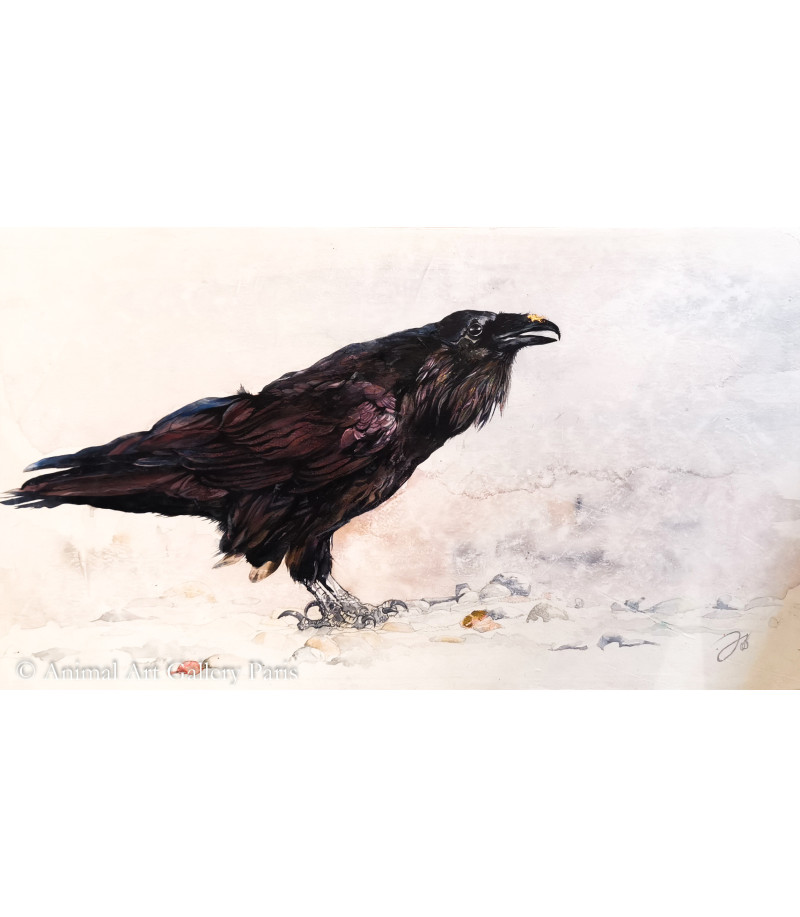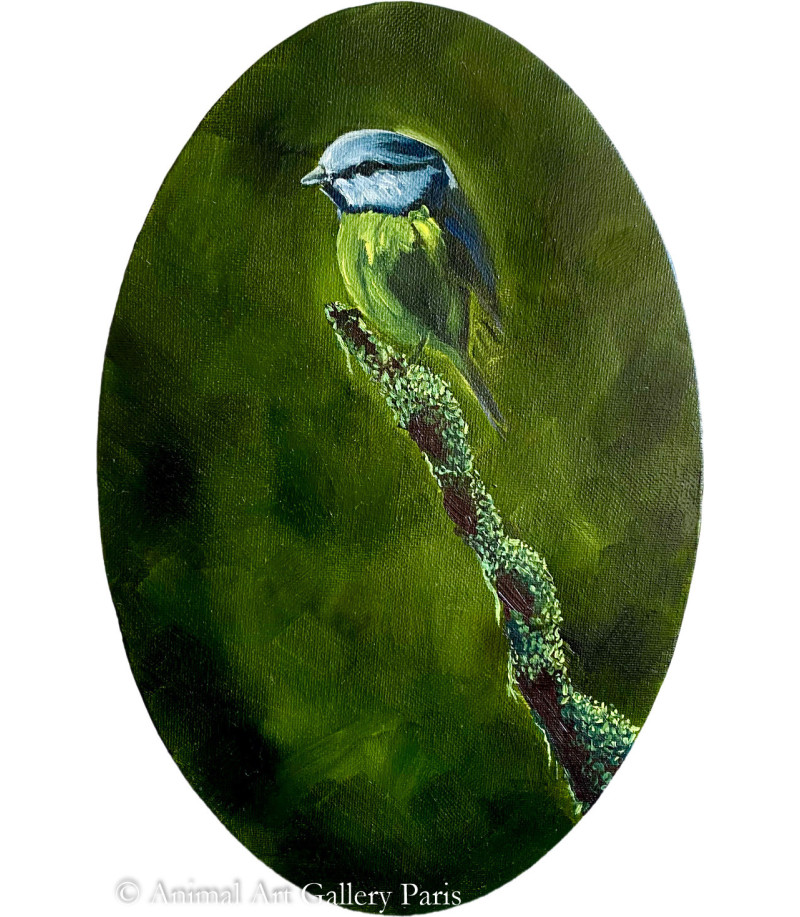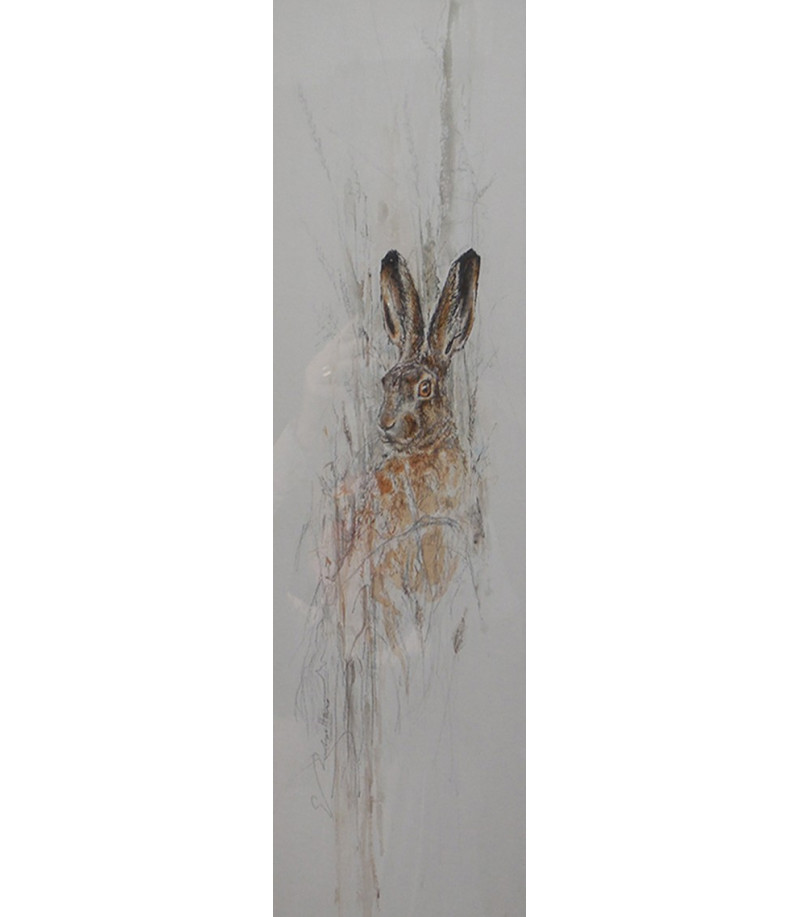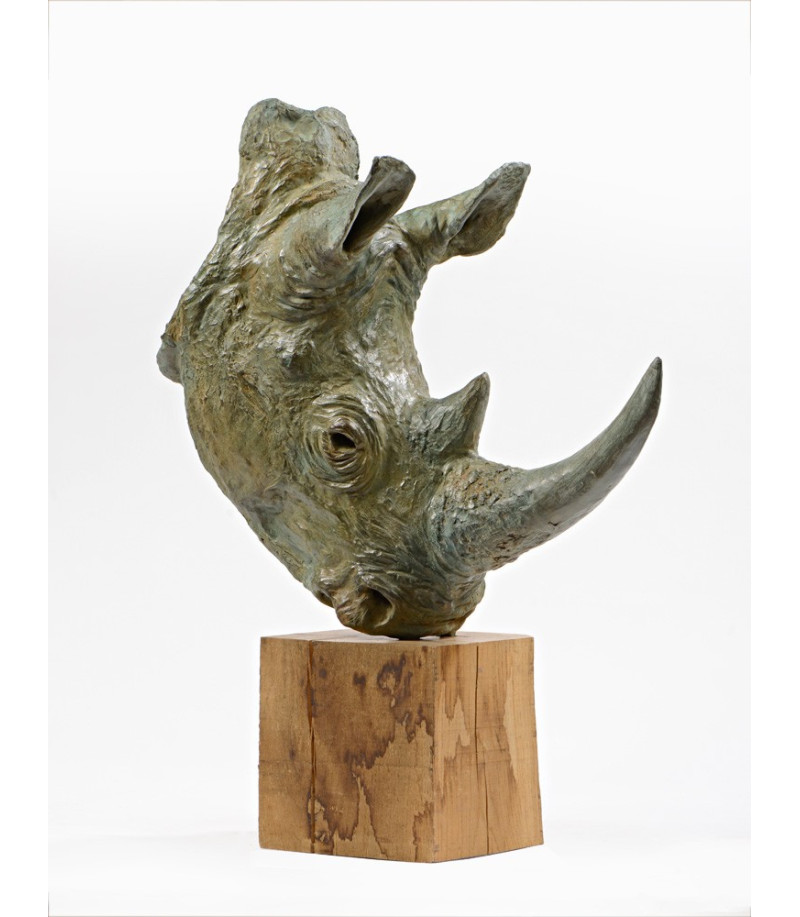DE L'OR EN ALASKA (Corbeau...
“De l’or en Alaska” (corbeau noir) est une œuvre de Julie Salmon, réalisée avec du gesso, encres, encaustique et or sur papier marouflé sur Capamount (du carton), mesurant 42 x 72 cm.
Il s’agit d’une œuvre élégante représentant un corbeau noir regardant au loin. Son regard est orienté vers l’horizon. C’est une œuvre aux allures réaliste au vu des nombreux détails dépeints et de la justesse des formes. C’est un original, une pièce unique.
Julie Salmon représente les animaux qu'elle observe en général sur le terrain.
“De l’or en Alaska” (corbeau noir) is a work by Julie Salmon, made with gesso, inks, encaustics and gold on Capamount mounted paper, measuring 42 x 72 cm. It is an elegant work depicting a black raven looking in the distance. His gaze is directed towards the horizon. It is a work with a realistic look in view of the many details depicted and the accuracy of the forms. It is a unique and authentic piece. Julie Salmon represents the animals she closely observes in her work in a unique way. In addition, it uses light and dark tones and details to represent the animals, while making the whole just and original.
THE ROCKET MAN (Une mésange)
"The Rocket man" est une peinture réalisée par l’artiste autodidacte et créatif Thibaut Dapoigny. Cette petite pièce unique de 15 x 25 cm représente une mésange posée sur une branche d’arbre regardant au loin. L’œuvre est semblable à « Alone at least », une autre de ses créations.
La mésange est petite et bicolore. Alors que le haut de son corps est bleu, tout le plumage du bas de son corps est de couleur verte. On observe une nouvelle fois une harmonie entre l’oiseau et le fond du tableau puisque l’artiste pratique le ton sur ton. Il dépeint son sujet dans un environnement ressemblant à celui d’une forêt dense.
L'œuvre de Thibaut Dapoigny est caractérisée par des couleurs singulières et originales formant ainsi un contraste entre le sujet représenté et cette modernité. Une nouvelle ère se crée dans la peinture animalière alliant couleurs vibrantes et décalage dans les représentations.
"The Rocket man" is a painting made by self-taught and creative artist Thibaut Dapoigny. This small single piece of 15 x 25 cm represents a chickadee placed on a tree branch looking in the distance. The work is similar to “Alone at least” another of his creations.
The chickadee is small and bicoloured. While the top of its body is blue, all the plumage of the bottom of its body is green. We observe once again a harmony between the bird and the background of the painting since the artist practices tone on tone. He depicts his subject in an environment resembling that of a dense forest.
The work of Thibaut Dapoigny is characterized by singular and original colors thus forming a contrast between the represented subject and this modernity. A new era is created in wildlife painting combining vibrant colors and shifting in representations.
PORTRAIT DE LIEVRE №1
"Portrait de lièvre N°1" est un dessin à l’aquarelle de l’artiste Estelle Rebottaro, mesurant 37,5 x 81cm. Au centre de la composition apparaît un lièvre, à moitié caché par la végétation, qui porte son regard vers le spectateur. C’est sur un fond neutre que la silhouette de ce dernier se dessine. Cependant différentes nuances sont apportées au pelage de l’animal permettant de le mettre en avant et donne ainsi un aspect réaliste au dessin tout en délicatesse. Le regard de l’animal apporte un dynamisme à la composition et transmet une certaine émotion. L’aquarelle permet de réaliser des traits fins et délicat qui apportent différentes nuances à la composition afin de donner un aspect réaliste à cette dernière. L’animal est représenté dans son environnement naturel et offre ainsi une réalisation presque sur le vif. C’est une pièce unique et authentique que nous propose l’artiste.
“Portrait de lièvre N°1” is a watercolour drawing by the artist Estelle Rebottaro, measuring 37.5 x 81cm. At the centre of the composition appears a hare, half-hidden by the vegetation, looking towards the spectator. It is on a neutral background that the silhouette of the latter is drawn. However, different shades are brought to the fur of the animal allowing it to be highlighted and thus gives a realistic look to the design while delicately. The look of the animal brings dynamism to the composition and transmits a certain emotion. Watercolour makes it possible to achieve fine and delicate lines that bring different nuances to the composition in order to give it a realistic look. The animal is represented in its natural environment and thus offers a realization almost on the spot. It is a unique and authentic piece that the artist offers us.










